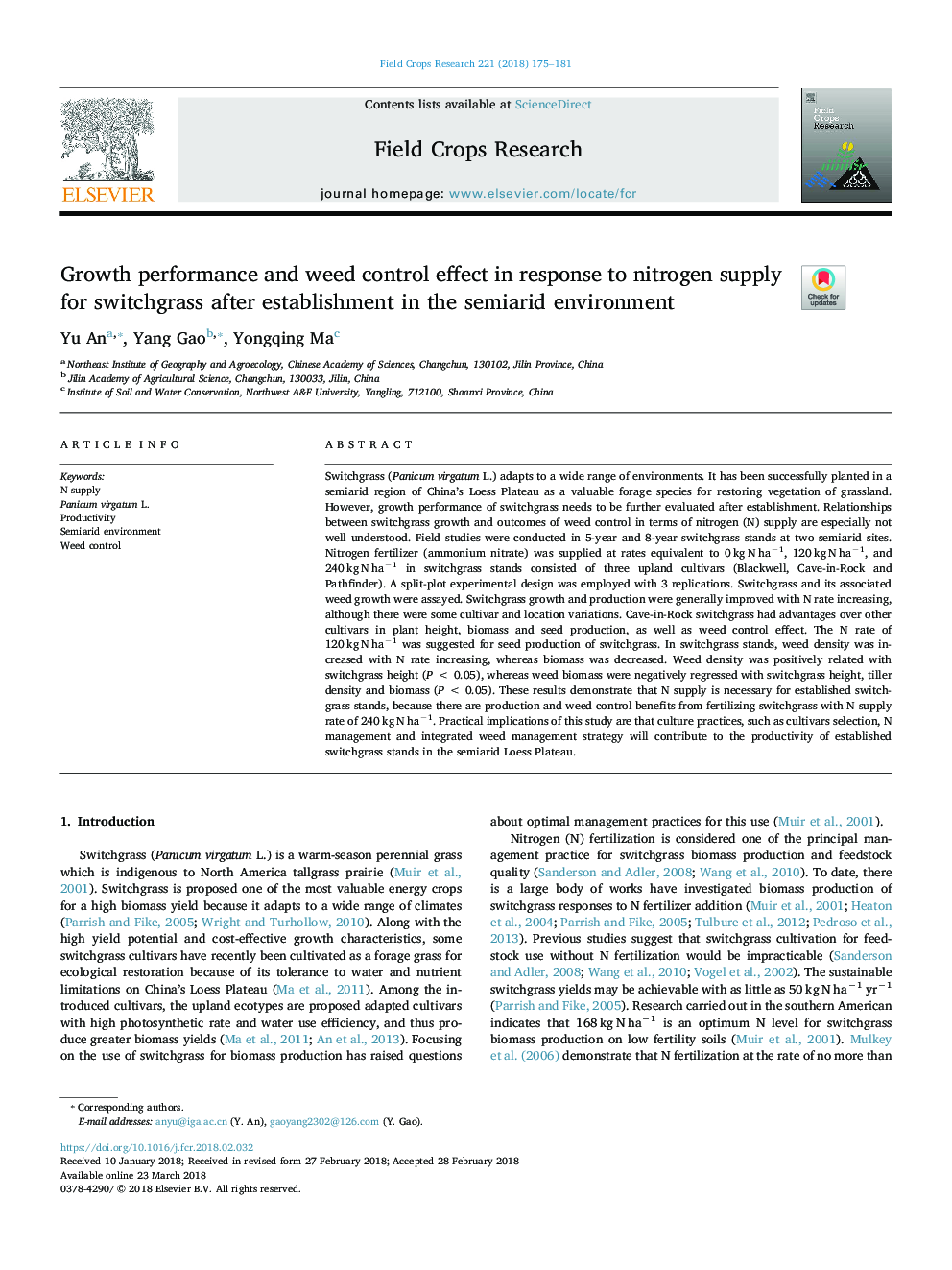| Article ID | Journal | Published Year | Pages | File Type |
|---|---|---|---|---|
| 8879246 | Field Crops Research | 2018 | 7 Pages |
Abstract
Switchgrass (Panicum virgatum L.) adapts to a wide range of environments. It has been successfully planted in a semiarid region of China's Loess Plateau as a valuable forage species for restoring vegetation of grassland. However, growth performance of switchgrass needs to be further evaluated after establishment. Relationships between switchgrass growth and outcomes of weed control in terms of nitrogen (N) supply are especially not well understood. Field studies were conducted in 5-year and 8-year switchgrass stands at two semiarid sites. Nitrogen fertilizer (ammonium nitrate) was supplied at rates equivalent to 0â¯kgâ¯Nâ¯haâ1, 120â¯kgâ¯Nâ¯haâ1, and 240â¯kgâ¯Nâ¯haâ1 in switchgrass stands consisted of three upland cultivars (Blackwell, Cave-in-Rock and Pathfinder). A split-plot experimental design was employed with 3 replications. Switchgrass and its associated weed growth were assayed. Switchgrass growth and production were generally improved with N rate increasing, although there were some cultivar and location variations. Cave-in-Rock switchgrass had advantages over other cultivars in plant height, biomass and seed production, as well as weed control effect. The N rate of 120â¯kgâ¯Nâ¯haâ1 was suggested for seed production of switchgrass. In switchgrass stands, weed density was increased with N rate increasing, whereas biomass was decreased. Weed density was positively related with switchgrass height (Pâ¯<â¯0.05), whereas weed biomass were negatively regressed with switchgrass height, tiller density and biomass (Pâ¯<â¯0.05). These results demonstrate that N supply is necessary for established switchgrass stands, because there are production and weed control benefits from fertilizing switchgrass with N supply rate of 240â¯kgâ¯Nâ¯haâ1. Practical implications of this study are that culture practices, such as cultivars selection, N management and integrated weed management strategy will contribute to the productivity of established switchgrass stands in the semiarid Loess Plateau.
Related Topics
Life Sciences
Agricultural and Biological Sciences
Agronomy and Crop Science
Authors
Yu An, Yang Gao, Yongqing Ma,
